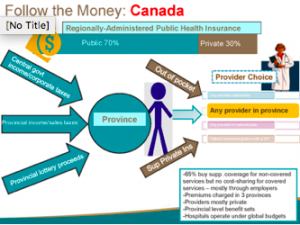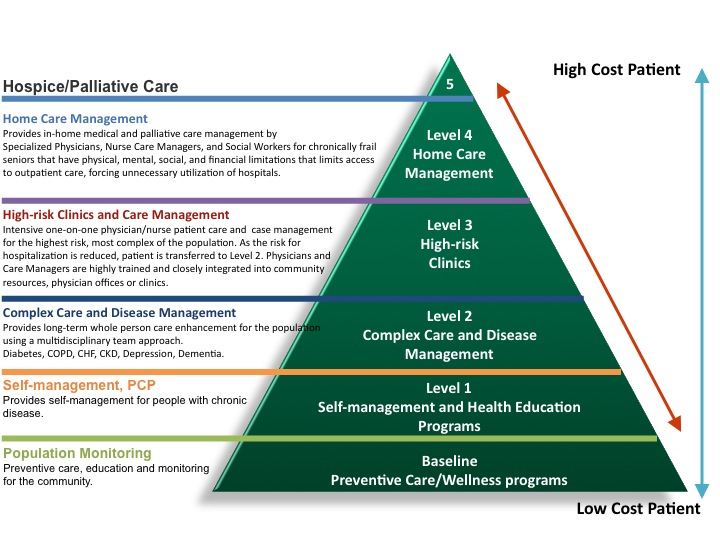Experts are paid mainly on a fee-for-service basis, although there is variation throughout provinces. For example, in Quebec, alternative payment structures comprised about 15 percent of total payments to professionals in 20162017, as compared to 22 percent in British Columbia and 33 percent in Saskatchewan. Clients can choose to go directly to a professional, but it is more typical for GPs Rehabilitation Center to refer clients to specialty care.
Most of physicians and specialists expense P/T federal governments directly, although some are paid a wage by a healthcare facility or center. Clients may be required to pay out-of-pocket for services that are not covered by public insurance coverage plans. After-hours care is often offered in physician-led walk-in centers and hospital emergency situation rooms.
Historically, GPs have actually not been required to supply after-hours care, although more recent group-practice arrangements specify requirements or monetary rewards for supplying after-hours care to signed up patients. 21 In 2015, 48 percent of GPs in Canada (67% in Ontario) reported having plans for patients to see a doctor or nurse after hours.

The 6-Second Trick For Why Was It Important For The Institute Of Medicine (Iom) To Develop Its Six Aims For Health Care?
They are typically http://louisfqac481.timeforchangecounselling.com/the-6-second-trick-for-a-health-care-professional-is-caring-for-a-patient-who-is-about-to-begin-taking-epoetin-alfa handled by delegated health authorities or medical facility boards representing the neighborhood. In a lot of provinces and areas, lots of medical facilities are publicly owned,24 whereas in Ontario they are predominantly personal not-for-profit corporations. 25 There are no specific information on the number of private for-profit clinics (mainly diagnostic and surgical).

26 Hospitals in Canada generally run under yearly worldwide spending plans, negotiated with the provincial ministry of health or entrusted health authority. Nevertheless, a number of provinces, including Ontario, Alberta, and British Columbia, have considered introducing activity-based financing for medical facilities, paying a fixed quantity for some services provided to patients. 27 Hospital-based doctors typically are not health center staff members and are paid fee-for-service straight by the provincial ministries of health.
Hospital-based mental health care is offered in specialized psychiatric health centers and in general hospitals with mental health beds. The P/T governments all offer a range of neighborhood mental health and addiction services, including case management, assistance for households and caregivers, community-based crisis services, and supportive housing. 28 Personal psychologists are paid out-of-pocket or through personal insurance.
Excitement About What Is United Health Care
Psychological health has actually not been officially integrated into medical care. Nevertheless, some companies and provinces have actually released efforts to coordinate or collocate psychological health services with main care. For example, in Ontario, an intersectoral psychological health strategy has been in location since 2011 and was broadened in 2014 to better integrate mental health and medical care.
All P/T governments fund such services through basic taxation, however protection differs across jurisdictions. All provinces provide some property care and some combination of case management and nursing care for home care customers, but there is substantial variation when it concerns other services, consisting of medical devices, products, and home assistance.
Eligibility for house and property long-lasting care services is usually identified by means of a needs evaluation based upon health status and functional impairment. Some jurisdictions also consist of means-testing. About half of P/T federal governments provide some house care without means-testing, however gain access to may depend both on assessed concern and on the schedule of services within capped budget plans.
Some Known Factual Statements About What Does Cms Stand For In Health Care Drug Abuse Treatment
In addition, monetary supplements based on capability to pay can assist support room-and-board costs. Some provinces have actually established minimum residency durations as an eligibility condition for facility admission. Spending on nonhospital organizations, most of which are residential long-lasting care centers, was approximated to represent simply over 11 percent of total health expenses in 2017, with funding mainly from public sources (70%).
Public financing of home care is supplied either through P/T federal government contracts with companies that deliver services or through federal government stipends to patients to purchase their own services. For instance, British Columbia's Support for Independent Living program permits clients to buy their own home-support services. 32 Provinces and territories are accountable for providing palliative and end-of-life care in hospitals (covered under Canadian Medicare), where the majority of such costs take place.
In June 2016, the federal government presented legislation that amended the criminal code to allow eligible grownups to request medical assistance in dying from a physician or nurse practitioner. Because that time, P/T federal governments and medical associations have actually established procedures and regulative frameworks to permit for medical assistance in craving people facing terminal or permanent diseases.
What Is Health Care Fundamentals Explained
33 Support for casual caregivers (estimated to offer 66% to 84% of care to the senior) differs by province and territory. 34 For instance, Nova Scotia's Caretaker Advantage Program provides qualified caregivers and care receivers CAD 400 (USD 317) per month. 35 There are likewise some federal programs, including the Canada Caretaker Credit and the Work Insurance Coverage Compassionate Care Advantage.
Protection for prescription drugs has actually become a questionable concern in Canadian healthcare disputes. (I Viewfinder/ Shutterstock) Subscribe now for just $2 a month! Subscribe now for as little as $2 a month! Subscribe now for as low as $2 a month! The Country is reader supported: Chip in $10 or more to help us continue to compose about the concerns that matter. how to get free health care.
Did you know you can support The Country by drinking wine? Rowan Burdge was diagnosed with type 1 diabetes simply over a decade ago, when she was 21 years old. Considering that then, she approximates that she's spent over $100,000 on prescriptions, co-pay, deductibles, and premiums to handle a complex, chronic illness.
The Basic Principles Of A Health Care Professional Is Caring For A Patient Who Is About To Begin Taking Epoetin Alfa
However Burdge doesn't reside in the United States. She lives in Canada. And while 2 of the 5 insurance prepares she's enrolled in are publicBritish Columbia's medicare program and the province's supplementary drug planthe financial hoops she has had to jump through simply to "remain alive," as she puts it, would be right at home in a story about a nation without single-payer health care.
That does not erase the reality that the Canadian system still falls short: Canada is the only country in the world that has a nationwide, universal medical insurance program, but no equivalent drug strategy, otherwise called pharmacare. Canada's technique to drug protection looks less like a unified system than a patchwork, with over 100 different government-run drug plans and 100,000 personal plans throughout the country.
One in five people living in Canada have either inadequate coverage for their health needs, or no protection at all. Homes with protection still pay an average of CAD 1,000 annually (about $755) in out-of-pocket costs, consisting of premiums and prescription co-pays, and distinctions across the various public drug plans run by each Canadian province and territory mean that the rate somebody pays for a drug in one location may be a lot more than they 'd pay in another.
The Ultimate Guide To What Is Single Payer Health Care?
However the expenses accumulate fast for somebody with a chronic condition; Burdge estimates that she spends between CAD 800 and 1,200 (about $600 to $900) on health requires every month. A report from the Canadian Federation of Nurses Unions found that financial barriers to prescription medicine cause numerous sudden deaths each year in people aged 55 to 64, to say nothing of other age groups.